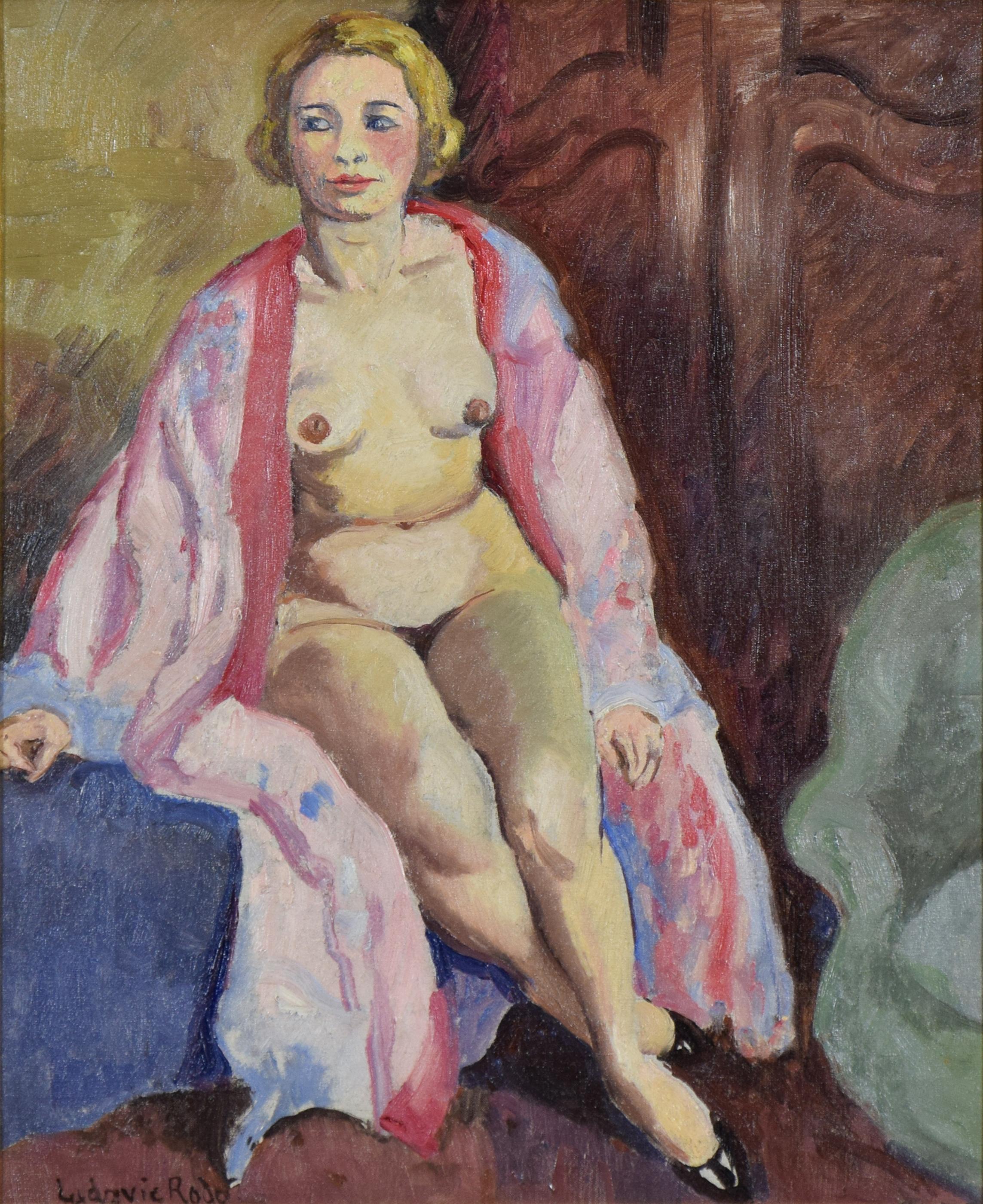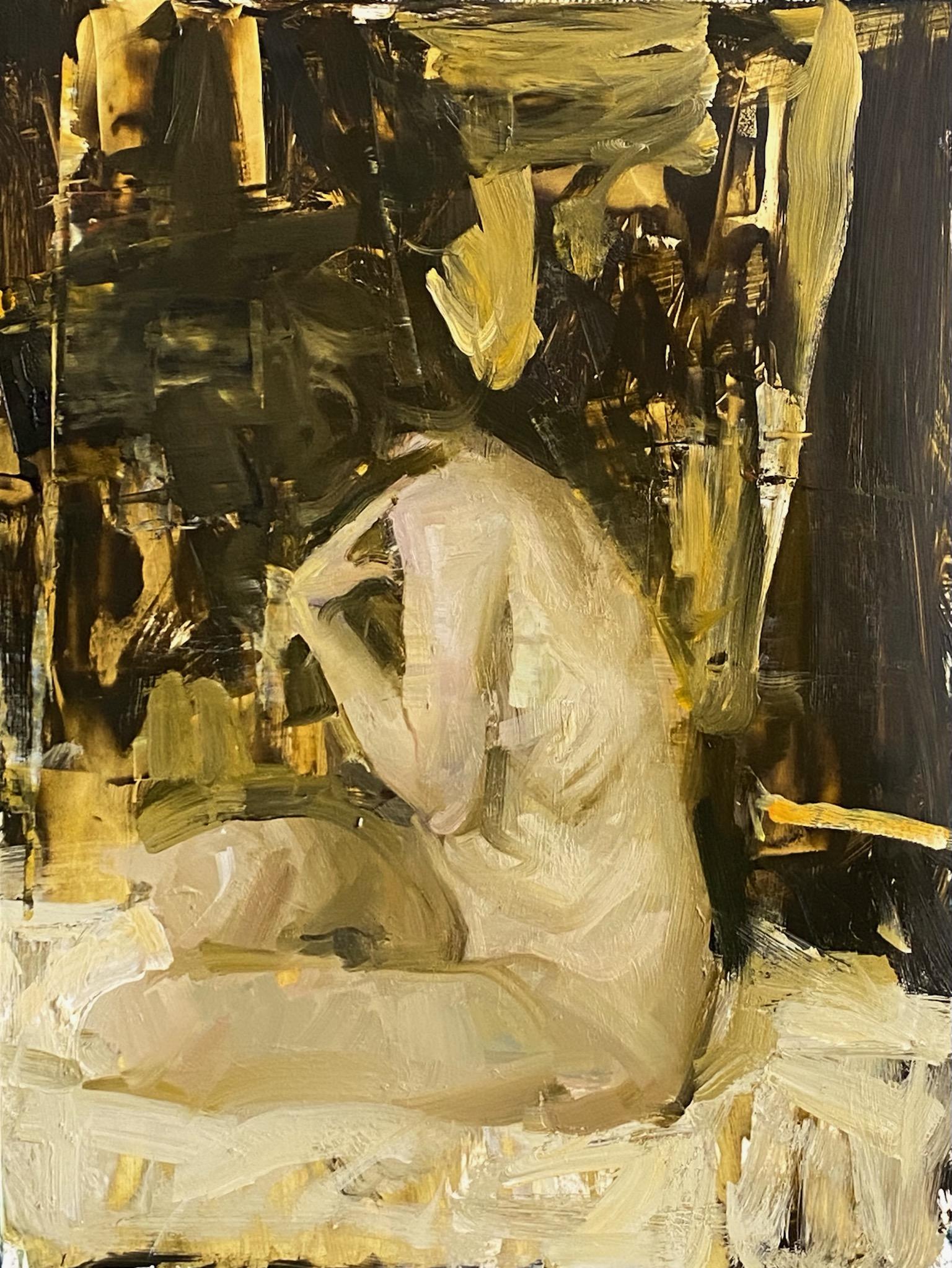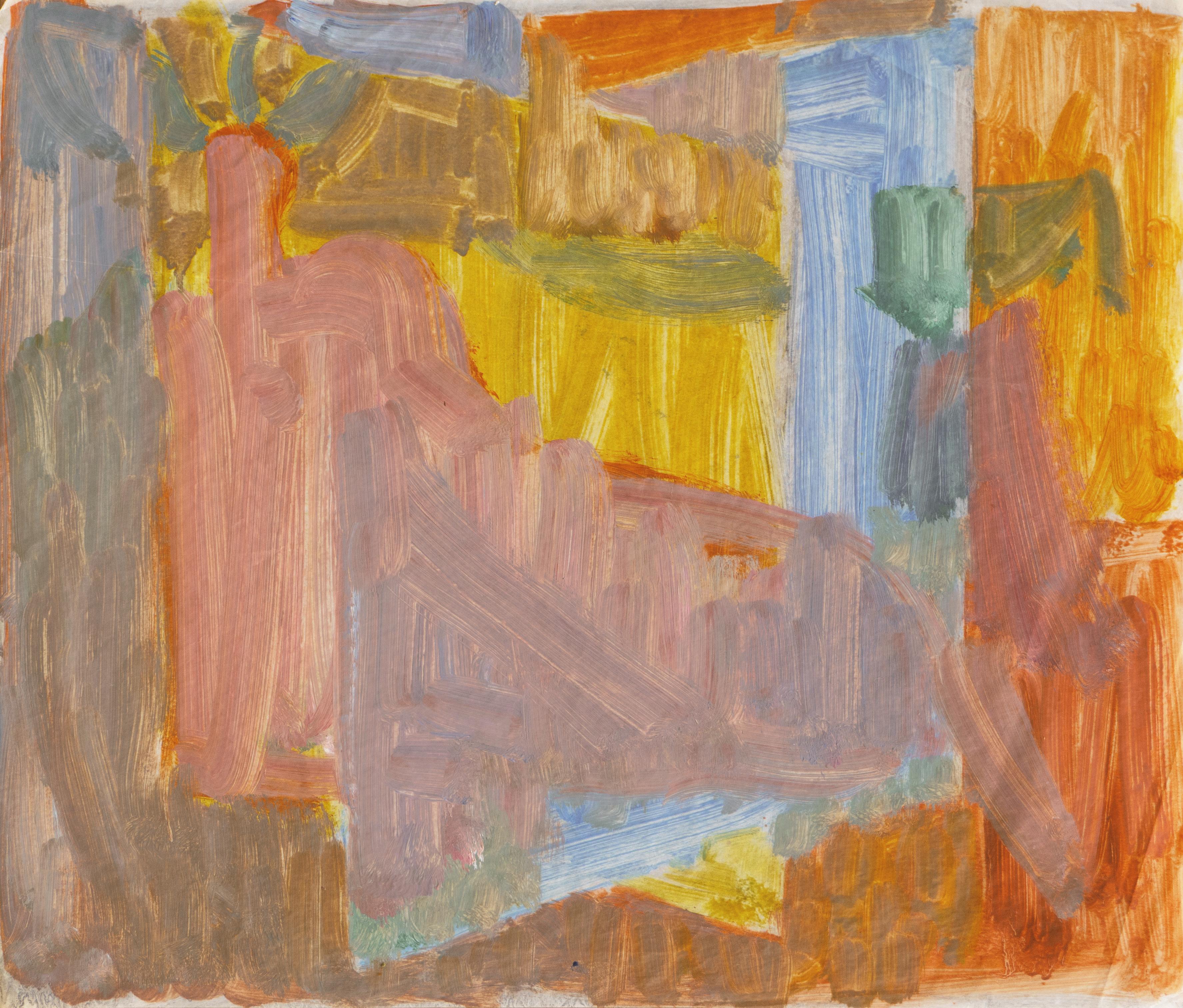William DringSummer Frolic - British Post Impressionist 30's art nude oil painting Slade Sch1931
1931
About the Item
- Creator:William Dring (1904 - 1990, British)
- Creation Year:1931
- Dimensions:Height: 30 in (76.2 cm)Width: 26 in (66.04 cm)Depth: 2 in (5.08 cm)
- Medium:
- Movement & Style:
- Period:
- Condition:
- Gallery Location:London, GB
- Reference Number:1stDibs: LU853113404122
William Dring
William Dring, but was known colloquially as John. He was the brother of the artist James Dring, he married the painter Grace Elizabeth Rothwell and their daughter Melissa was also an artist. Dring studied under Henry Tonks at the Slade School of Fine Art, 1922–25 and emerged as a fine draughtsman, a sympathetic portrait painter (fond of using his family as subjects) and a deft watercolorist. Dring won several prizes and scholarships at the Slade. He then taught until 1940 at Southampton School of Art and became an official war artist. The Imperial War Museum owns 64 of his portraits in pastel (mainly of naval personnel who received battle awards) and five of his elaborately constructed oil paintings. He was elected an associate of the Royal Academy in 1944 when he showed a strong portrait of his daughter Melissa and after the war he became a noted exhibitor at the Royal Academy, being elected RA in 1955. Dring produced a string of boardroom and official portraits, including the presentation of the Freedom of the City of London to the then HRH Princess Elizabeth in 1947. In 1981, Dring was commissioned to record the five most influential benchers of Lincoln’s Inn, Mrs. Thatcher, Lord Denning, Mr. Megarry, Lord Hailsham and Lord Widgery. Dring exhibited at the Royal Academy London between 1945–70, exhibiting over 150 paintings.
- ShippingRetrieving quote...Ships From: London, United Kingdom
- Return PolicyA return for this item may be initiated within 14 days of delivery.
- Mother and Child Bathing - British Slade School 30's Art Deco nude oil paintingLocated in London, GBAn intriguing 1930's Art Deco Slade School oil on canvas painting. The work depicts a mother and child bathing, surrounded by other bathers. It possibly has religious overtones. This...Category
1930s Art Deco Figurative Paintings
MaterialsOil
- Nude - British Impressionist art 50s oil painting black nude woman female artistBy Constance Anne ParkerLocated in London, GBA superb circa 1955 oil painting by British listed female artist Constance Anne Parker depicting a nude black woman. A very evocative period portrait of a woman by highly regarded ...Category
20th Century Impressionist Nude Paintings
MaterialsOil
- Nude in Life Class with Green Shoes - British 40's Slade School art oil paintingBy E.A. JayLocated in London, GBThis superb Post Impressionist Slade School female full length seated nude portrait oil painting is by female artist E A Jay. Painted in the 1940'...Category
1940s Post-Impressionist Nude Paintings
MaterialsOil
- The Night Passeth, the Day Cometh - British Post Impressionist art oil paintingBy Harry MorleyLocated in London, GBThis superb British exhibited Post Impressionist oil painting is by much sought after noted artist Harry Morley. It was painted in 1921 and exhibited that year at the Royal Academy L...Category
1920s Post-Impressionist Portrait Paintings
MaterialsOil
- Seated Nude Model in Art Class - British 40's Slade School portrait oil paintingBy E.A. JayLocated in London, GBThis superb Post Impressionist Slade School female full length seated nude portrait oil painting is by female artist E A Jay. Painted in the 1940'...Category
1940s Post-Impressionist Nude Paintings
MaterialsOil
- Reclining Nude - Industrial Scene Verso - Scottish 1940's portrait oil paintingLocated in London, GBThis interesting British 1940's oil painting is attributed to Harry Jefferson Barnes. Barnes trained at the Slade School of Art and later went on to become Director of the Glasgow Sc...Category
1940s Impressionist Nude Paintings
MaterialsOil
- Nu Assise by Ludovic-Rodo Pissarro - Nude paintingBy Ludovic-Rodo PissarroLocated in London, GBNu Assise by Ludovic-Rodo Pissarro (1878-1952) Oil on canvas 55 x 47 cm (21 ⅝ x 18 ½ inches) Signed lower left, Ludovic Rodo Executed circa 1910 This work is accompanied by a cer...Category
1910s Fauvist Nude Paintings
MaterialsCanvas, Oil
- "Figure in Gold Abstraction", Oil PaintingBy Quang HoLocated in Denver, COQuang Ho's (US based) "Figure in Gold Abstraction" is an original, handmade oil painting that depicts a pale nude female model sitting among rumpled white fabric as she delicately pl...Category
2010s Post-Impressionist Figurative Paintings
MaterialsOil, Panel
- 'Reclining Nude', Paris, Louvre, Salon d'Automne, Ac. Chaumière, LACMA, SFAABy Victor Di GesuLocated in Santa Cruz, CAPainted circa 1955 by Victor Di Gesu (American, 1914-1988) and stamped, verso, with Victor di Gesu estate stamp. Winner of the Prix Othon Friesz, Victor di Gesu first attended the L...Category
1950s Post-Impressionist Figurative Paintings
MaterialsOil, Paper
- Stuart Denyer NEAC - large English original STUDIO NUDE Oil Painting R.A. LONDONLocated in Cirencester, GBARTIST: Stuart Denyer NEAC (1953-) British TITLE: "The Studio At The Royal Academy London" SIGNED: lower right and dated 1981 MEASURES: 120cm x 89cm inclusive of frame CONDITION...Category
Late 20th Century Post-Impressionist Figurative Paintings
MaterialsOil
- 'Figural Study, Rust & Jade', Paris, Grønningen, Danish National MuseumBy Helge JensenLocated in Santa Cruz, CASigned lower right, 'Helge' for Helge Jensen (Danish, 1899 - 1986) and painted circa 1925. This Danish Post-Impressionist first studied with Harald Giersing (1915-1916) before initi...Category
1920s Post-Impressionist Nude Paintings
MaterialsOil, Canvas
- Le carnaval du sage by René MagritteBy René MagritteLocated in New Orleans, LARené Magritte 1898-1967 Belgian Le carnaval du sage (The Sage’s Carnival) Signed “Magritte” (lower right); titled and dated "Le carnaval du sage 1947" (en verso) Oil on canvas The enigmatic paintings of René Magritte have become some of the most familiar and celebrated of the Surrealist movement. Among the most influential of the Surrealist painters of the 20th century, Magritte is an artist of international renown, as beloved for his popular appeal as he is for the psychological intensity of his works. The present oil on canvas, entitled Le carnaval du sage, was executed in 1947 at the height of his career, and it is a tour-de-force example of the haunting, mysterious scenes that comprise his oeuvre. Painted in the years following the Second World War, Le carnaval du sage showcases several recurring themes from Magritte’s oeuvre. Chiefly, a juxtaposition between the visible and the hidden is keenly felt. Throughout his career, Magritte explores the psychological obsession with revealing what is hidden, particularly with regard to the human face. In his Le fils de l’homme, he obscures the face of a man in a bowler hat with an apple, while his Les amants (Metropolitan Museum of Art) conceals the faces of two lovers with white sheets. In Le carnaval du sage, Magritte juxtaposes the blatant nudity of his central figure by masking her face, simultaneously revealing and concealing her from the viewer. The work also incorporates two of Magritte’s most common tropes – the glass of water and the baguette. Lending the scene a strange sense of domesticity, they appear infinitely familiar and distinctly out of place, and thus heighten the uncanny effect of Magritte’s composition. In the background hovers a ghost obscured by a sheet, a figure which was of particular fascination to Magritte beginning in 1946. He once wrote to his fellow Surrealist Paul Nougé: "I saw in a dream an answer to the problem of the ghost: the traditional ghost draped...Category
20th Century Post-Impressionist Nude Paintings
MaterialsCanvas, Oil






